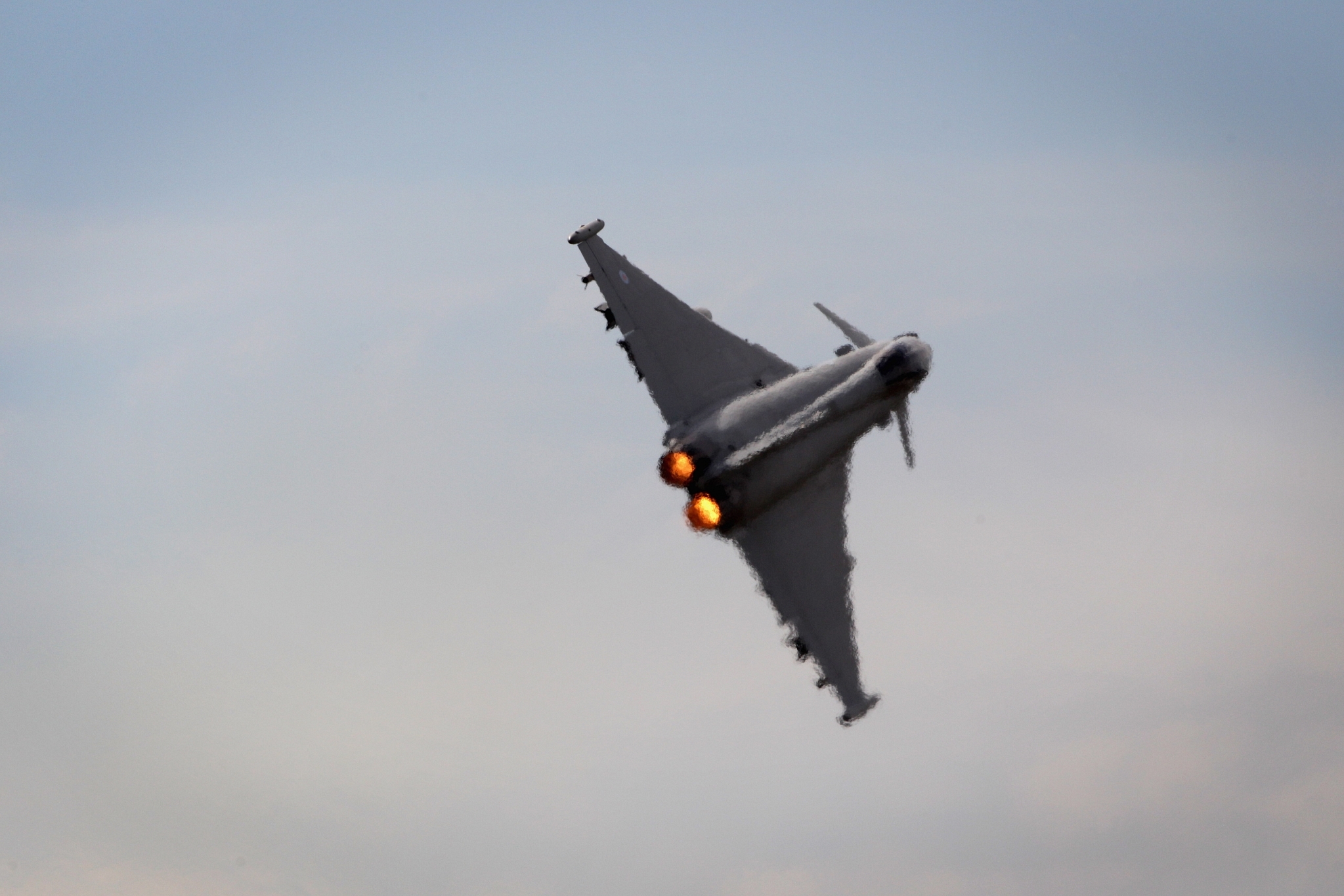Insta
Modi Government Tweaks Single Engine Fighter Plan, Will Also Consider Twin Engine Jets For IAF

A Typhoon Eurofighter takes off at the Farnborough Airshow. (Dan Kitwood/Getty Images)
The government has tweaked its two-year-old plan to build over 100 single-engine fighter jets in India in collaboration with a foreign manufacturer under its ‘Make in India’ initiative. The plan will now not be limited to single-engine fighters as the government has decided to also consider twin-engine jets to fill the gaping holes in the Indian Air Force’s fighter squadron strength and capabilities.
The move to open up the contest to twin-engine fighters will have two advantages. One, it will theoretically increase India’s options. Under the single-engine plan, Lockheed Martin F-16 Block 70 and Saab Gripen-E were the only options India had. With the government considering twin-engine fighters, the competition is now open to Dassault Rafale, Eurofighter Typhoon, Sukhoi Su-35 and F/A-18E/F Super Hornet. Two, broadening the competition would definitely increase the competition between the bidders, helping India get a better deal.
“The original plan placed an unnecessary restriction on only single-engine fighters, which limited the competition to just two jets (American F-16 and Swedish Gripen-E). The aim is to increase the contenders and avoid needless allegations later,” a source was quoted by the Times of India as saying.
However, the move may also have some drawbacks. Other than delaying the process, the decision to consider twin-engine fighters threatens to turn the current accusation bid into a repeat of the now infamous Medium Multi-Role Combat Aircraft competition that was aimed at procuring 126 aircraft. The competition, which involved both single and twin engine fighter jets, ended with the cancellation of the tender in 2015, nearly a decade after it was granted preliminary go-ahead.
Moreover, single-engine fighters have a quick turn around time and have a low life-cycle cost compared to twin-engine fighters.
IAF’s fighter squadron strength is down to 31. This number could go down further with the retirement of ageing MiG-21s. India needs at least 42 fighter squadrons to effectively deal with a two-front war situation. To shore up numbers, the IAF has placed orders for 83 Tejas fighters, taking the total orders for indigenous fighters to 123. India has also singed a deal to acquire 36 Rafales, the first of which may arrive in 2019. The IAF plans to reach its sanctioned strength of 42 squadrons by 2032.
Introducing ElectionsHQ + 50 Ground Reports Project
The 2024 elections might seem easy to guess, but there are some important questions that shouldn't be missed.
Do freebies still sway voters? Do people prioritise infrastructure when voting? How will Punjab vote?
The answers to these questions provide great insights into where we, as a country, are headed in the years to come.
Swarajya is starting a project with an aim to do 50 solid ground stories and a smart commentary service on WhatsApp, a one-of-a-kind. We'd love your support during this election season.
Click below to contribute.
Latest